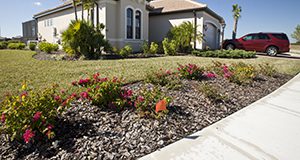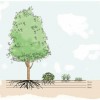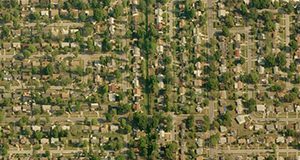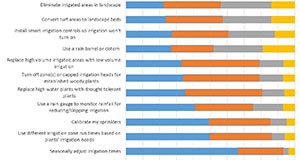Interest in understanding water use and irrigation costs has risen in recent years. This case study is a 5-page evaluation of water use and associated costs for residential landscape irrigation in Osceola County and Orange County, Florida. Homeowners in central Florida can use the results to assess their water consumption and bills in relation to similar homes in the area. Written by Nick Taylor, Tricia Kyzar, Pierce Jones, and Kaitlin O. Robb Price, and published by the UF/IFAS Department of Agricultural and Biological Engineering, December 2019.
https://edis.ifas.ufl.edu/ae536
Tag: Landscape Irrigation
Understanding Good Irrigation and Fertilization Behaviors Among Households Using Landscape Design Features

With increasing concerns over water resources in Florida, Extension can target households with irrigated landscapes to encourage practices that protect water quality and quantity. This document compares the water conservation education needs of different Florida household subgroups. Written by Anil Kumar Chaudhary and Laura A. Warner and published by the UF/IFAS Department of Agricultural Education and Communication, January 2018.
http://edis.ifas.ufl.edu/wc292
Encouraging Landscape Water-Conservation Behaviors #1: Tailoring Programs To Florida Residents Who Use Irrigation in the Home Landscape
To better promote water-conservation practices among homeowners who irrigate their landscaping, Extension professionals must first have a clear understanding of this target audience’s habits, beliefs, and needs. This 10-page fact sheet recommends that Extension professionals analyze their audiences through several factors, including their interest in water conservation and knowledge of water issues and laws. Written by Laura A. Warner, Emmett Martin, Alexa Lamm, Joy Rumble, and Randall Cantrell, and published by the UF Department of Agricultural Education and Communication, May 2015. http://edis.ifas.ufl.edu/wc199
Managing Landscape Irrigation to Avoid Soil and Nutrient Losses
 Proper irrigation management is critical to conserve and protect water resources and to properly manage nutrients in the home landscape. How lawns and landscapes are irrigated directly impacts the natural environment, so landscape maintenance professionals and homeowners must adopt environmentally-friendly approaches to irrigation management. After selecting the right plant for the right place, water is the next critical factor to establish and maintain a healthy lawn and landscape. Fertilization is another important component of lawn and landscape maintenance, and irrigation must be applied correctly, especially following fertilization, to minimize potential nutrient losses. This publication supplements other UF/IFAS Extension publications that also include information on the role of soil and the root zone in irrigation management. This publication is designed to help UF/IFAS Extension county agents prepare materials to directly address nutrient losses from lawns and landscapes caused by inadequate irrigation management practices.This 6-page fact sheet was written by George Hochmuth, Laurie Trenholm, Don Rainey, Esen Momol, Claire Lewis, and Brian Niemann, and published by the UF Department of Soil and Water Science, October 2013.
Proper irrigation management is critical to conserve and protect water resources and to properly manage nutrients in the home landscape. How lawns and landscapes are irrigated directly impacts the natural environment, so landscape maintenance professionals and homeowners must adopt environmentally-friendly approaches to irrigation management. After selecting the right plant for the right place, water is the next critical factor to establish and maintain a healthy lawn and landscape. Fertilization is another important component of lawn and landscape maintenance, and irrigation must be applied correctly, especially following fertilization, to minimize potential nutrient losses. This publication supplements other UF/IFAS Extension publications that also include information on the role of soil and the root zone in irrigation management. This publication is designed to help UF/IFAS Extension county agents prepare materials to directly address nutrient losses from lawns and landscapes caused by inadequate irrigation management practices.This 6-page fact sheet was written by George Hochmuth, Laurie Trenholm, Don Rainey, Esen Momol, Claire Lewis, and Brian Niemann, and published by the UF Department of Soil and Water Science, October 2013.
http://edis.ifas.ufl.edu/ss586
Accounting for the Nutrients in Reclaimed Water for Landscape Irrigation (AE479)
 This 8-page fact sheet presents basic information for those using reclaimed water to irrigate lawns and landscapes. The information can serve as a guide to determine whether there is an opportunity to replace some of the fertilizer that might otherwise be applied and to offer guidance on avoiding runoff and leaching of excess nutrients. Written by Christopher J. Martinez, Mark W. Clark, Gurpal S. Toor, George J. Hochmuth, and Lawrence R. Parsons, and published by the UF Department of Agricultural and Biological Engineering, August 2011. (UF/IFAS photo by Marisol Amador)
This 8-page fact sheet presents basic information for those using reclaimed water to irrigate lawns and landscapes. The information can serve as a guide to determine whether there is an opportunity to replace some of the fertilizer that might otherwise be applied and to offer guidance on avoiding runoff and leaching of excess nutrients. Written by Christopher J. Martinez, Mark W. Clark, Gurpal S. Toor, George J. Hochmuth, and Lawrence R. Parsons, and published by the UF Department of Agricultural and Biological Engineering, August 2011. (UF/IFAS photo by Marisol Amador)
http://edis.ifas.ufl.edu/ae479
AE449 Using Reclaimed Water for Landscape Irrigation
AE449, a 6-page fact sheet by Christopher J. Martinez and Mark W. Clark, discusses how to manage for salinity and nutrients contained in reclaimed water when using it for landscape irrigation. Includes references. Published by the UF Department of Agricultural and Biological Engineering, July 2009.
http://edis.ifas.ufl.edu/AE449

